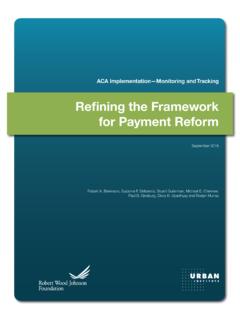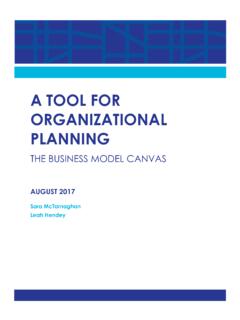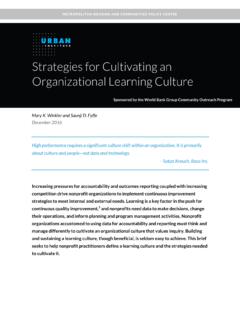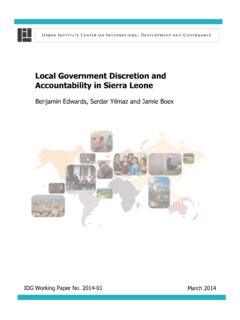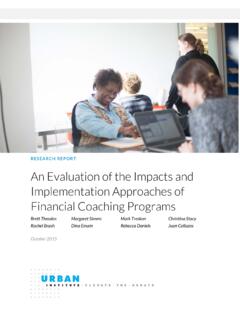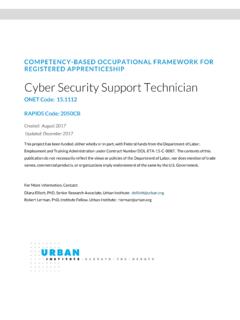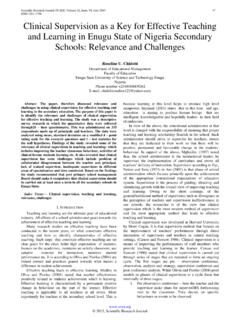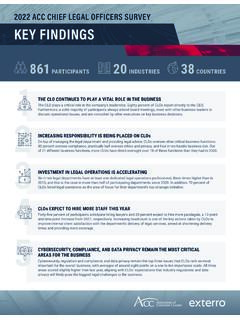Transcription of Understanding the Challenges of Prisoner Reentry
1 Reentry RESEARCH FIN DINGS. Understanding the Challenges of Prisoner Reentry : Research findings from the urban institute 's Prisoner Reentry Portfolio JANUARY. Justice Policy Center Reentry Researchers: Demelza Baer, Avinash Bhati, Lisa Brooks, Jennifer Castro, Nancy La Vigne, Kamala Mallik- Kane, Rebecca Naser, Jenny Osborne, Caterina 2006. Roman, John Roman, Shelli Rossman, Amy Solomon, Christy Visher, Laura Winterfield urban institute . Justice Policy Center Introduction The four-fold increase in incarceration rates in America over the past 25 years has had far- reaching consequences.
2 In 2003 alone, more than 656,000 state and federal prisoners returned to communities across the country, 1 affecting public safety, public health, economic and community well-being, and family networks. The impact of Prisoner Reentry is further compounded by the returning jail population with its unique set of Challenges and opportunities. Research in the last decade has begun to measure the effect of Reentry on returning prisoners, their families, and communities. Two-thirds of released prisoners are rearrested within three years of release.
3 2 One and a half million children have a parent in prison. 3 Four million citizens have lost their right to vote. 4 Men and women enter prisons with limited marketable work experience, low levels of educational or vocational skills, and many health-related issues, ranging from mental health needs to substance abuse histories and high rates of communicable diseases. When they leave prison, these Challenges remain and affect neighborhoods, families, and society at large. With limited assistance in their reintegration, former prisoners pose public safety risks to communities, and about half will return to prison for new crimes or parole violations within three years of release.
4 5 This cycle of removal and return of large numbers of adults, mostly men, is increasingly concentrated in communities often already deprived of resources and ill equipped to meet the Challenges this population presents. 6. In 2000, the Justice Policy Center at the urban institute launched an ongoing investment in Prisoner Reentry research to better understand the pathways of successful reintegration, the social and fiscal costs of current policies, and the impacts of incarceration and Reentry on individuals, families, and communities.
5 Over the past six years, the urban institute 's Reentry research portfolio has informed a broad set of policy and practice discussions about the Challenges facing former prisoners. The institute 's research includes a range of studies, from rigorous program evaluations to strategic planning partnerships with state and local jurisdictions. More specifically, the institute 's Reentry portfolio includes the following: Primary Research. The urban institute 's cornerstone study is Returning Home: Understanding the Challenges of Prisoner Reentry , a multistate, longitudinal study that documents the pathways of Prisoner reintegration, examines what factors contribute to a successful or unsuccessful Reentry experience, and identifies how those factors can inform policy.
6 The Returning Home study has been implemented in four states, including a pilot study in Maryland and full studies in Illinois, Ohio, and Texas. The goal in each state is to collect information on individuals' life circumstances immediately prior to, during, and up to one year after their release. Returning Home documents the Challenges of Reentry along five dimensions: individual, family, peer, community, and state. Program Evaluations. A large part of the urban institute Reentry research portfolio includes evaluations of Reentry programs and initiatives.
7 For example, with funding from the National institute of Justice and in partnership with the Research Triangle institute (RTI), the urban institute is conducting a multiyear comprehensive evaluation of the Serious and Violent Offender Reentry Initiative, a collaborative federal effort to improve Reentry outcomes alo ng criminal justice, employment, education, health, and housing dimensions. urban institute researchers are also engaged in individual evaluations of faith-based and other targeted Reentry programs. 2 urban institute Prisoner Reentry Research Portfolio Reentry Roundtables.
8 The Reentry Roundtable is an ongoing forum that brings together prominent academics, practitioners, community leaders, policymakers, advocates, and former prisoners to explore the policy impact of various components of Reentry such as housing, health care, public safety, and civic participation. The goal of the roundtables is to develop new thinking on the issue of Prisoner Reentry and to foster policy innovations that will improve outcomes for individuals, families, and communities. Policy Reports. An important component of the urban institute 's Reentry research port- folio also includes policy reports that synthesize existing research.
9 One example is a study using data from the Bureau of Justice Statistics to examine the state of parole in America. The study examined three major dimensions of the parole function: the extent to which parole boards make release decisions, the population under parole supervision, and the issue of parole revocation (the decision to send a parolee back to prison). Strategic Partnerships. The urban institute has engaged in several strategic partnerships with national organizations, including the National Governors Association, the Council of State Governments, and the International Association of Chiefs of Police, as well as state and local organizations.
10 For example, the urban institute is one of 10 partner agencies of the Re- Entry Policy Council, established in 2001 by the Council of State Governments to assist state government officials face the growing numbers of people leaving prison and jail and returning to the community. The Report of the Re-Entry Policy Council, coauthored by the Council of State Governments and the 10 project partners, provides extensive recommendations for the safe and successful return of prisoners to the community, reflecting the common ground reached by the Policy Council during a series of meetings.
